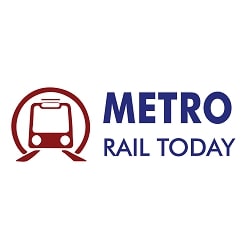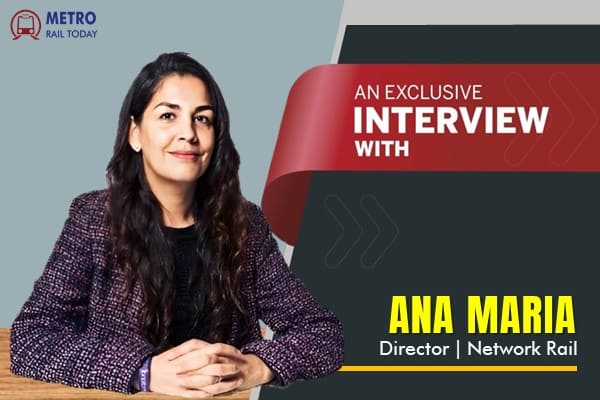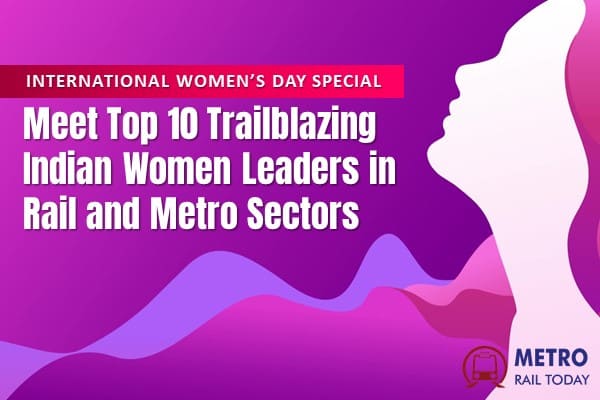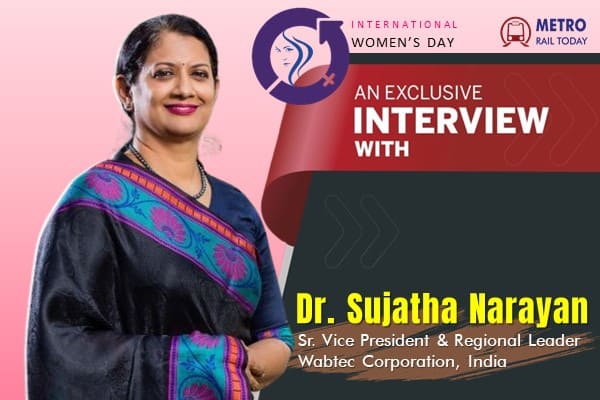 The Skyline Rail Project: Revolutionizing Rapid Transportation in Honolulu, Hawaii
The Skyline Rail Project: Revolutionizing Rapid Transportation in Honolulu, Hawaii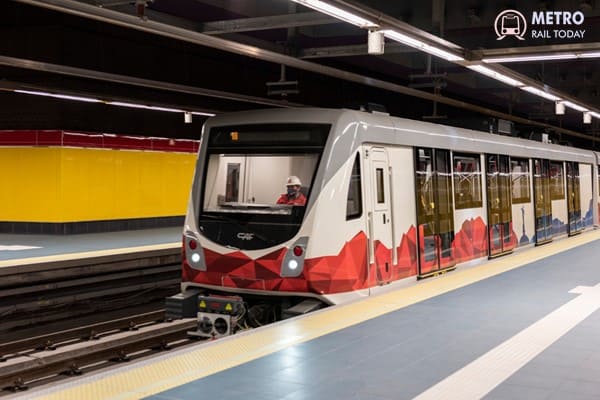 Tender floated for Prague Metro Trains and Automated Train Operation (ATO)
Tender floated for Prague Metro Trains and Automated Train Operation (ATO)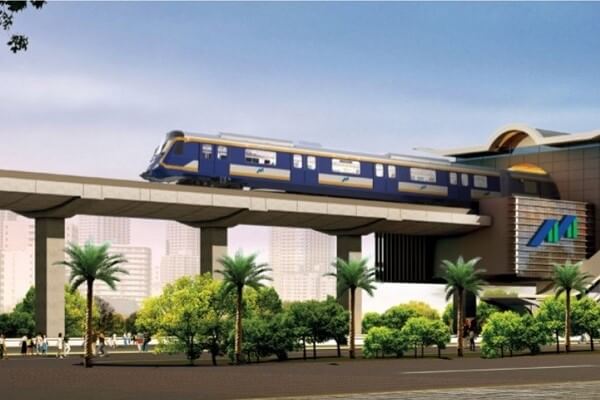 MMRDA floated tender to appoint General Consultants for Mumbai Metro Line 5
MMRDA floated tender to appoint General Consultants for Mumbai Metro Line 5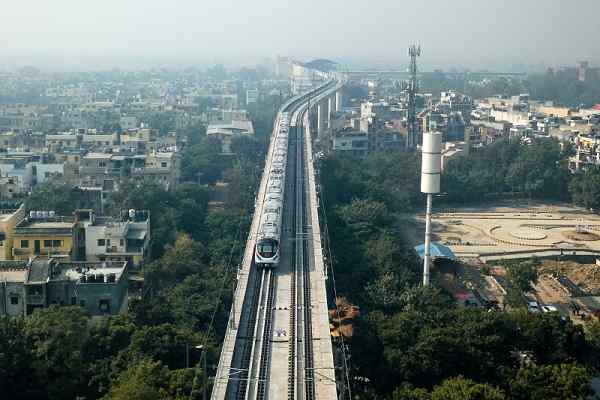 RailTel signs MoU with South African Firms to expand Railway Technology Business
RailTel signs MoU with South African Firms to expand Railway Technology Business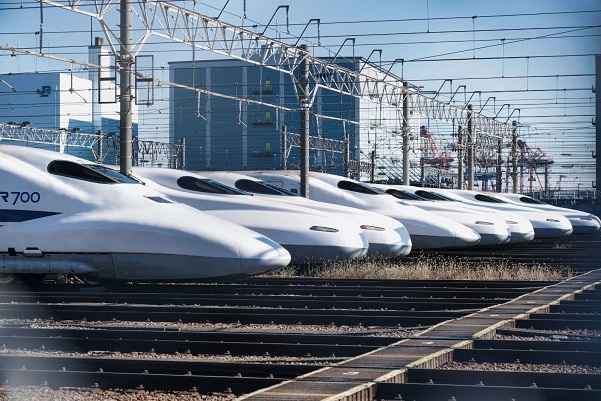 Latest updates on Sabarmati Rolling Stock Depot of Mumbai-Ahmedabad Bullet Train Project
Latest updates on Sabarmati Rolling Stock Depot of Mumbai-Ahmedabad Bullet Train Project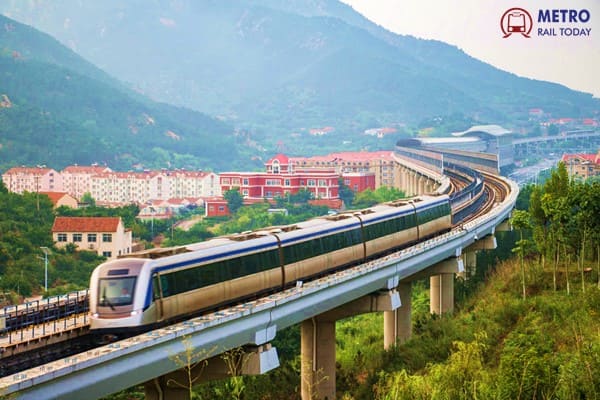 Route survey commences for ₹6,225 crore Bhubaneswar Metro Rail Project
Route survey commences for ₹6,225 crore Bhubaneswar Metro Rail Project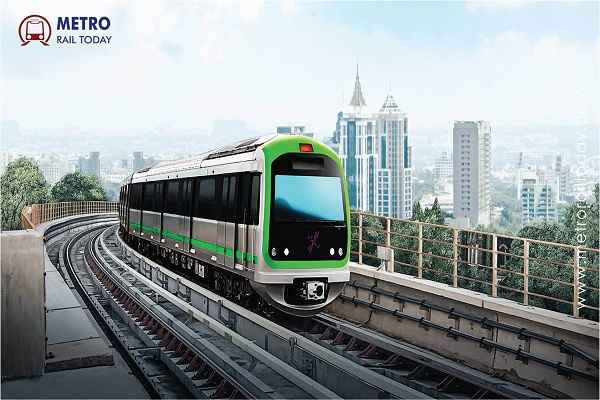 Eight firms bid for feasibility study of Bengaluru's Madavara-Tumakuru Metro Corridor
Eight firms bid for feasibility study of Bengaluru's Madavara-Tumakuru Metro Corridor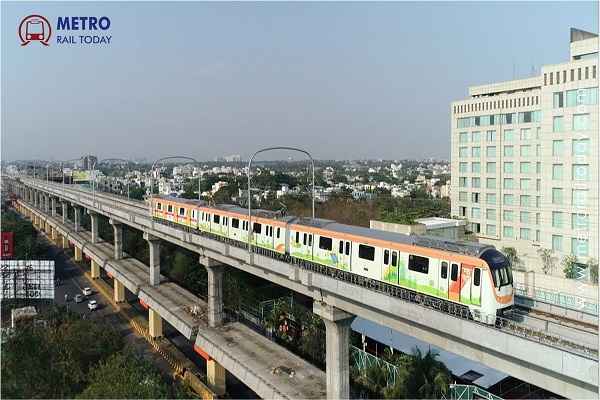 Two firms bid for Track Work Contract of Nagpur Metro Phase 2
Two firms bid for Track Work Contract of Nagpur Metro Phase 2 Derailing Integrity: Corruption Claims Hit Delhi Metro's Top Management
Derailing Integrity: Corruption Claims Hit Delhi Metro's Top Management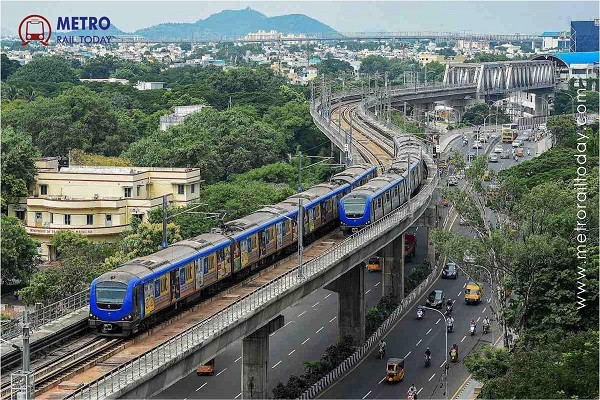 Six firms bid for DPR Consultancy for Chennai Metro's Koyambedu – Avadi Metro Line
Six firms bid for DPR Consultancy for Chennai Metro's Koyambedu – Avadi Metro Line
Interview of Dr. Vikas Kumar, Managing Director, Delhi Metro Rail Corporation
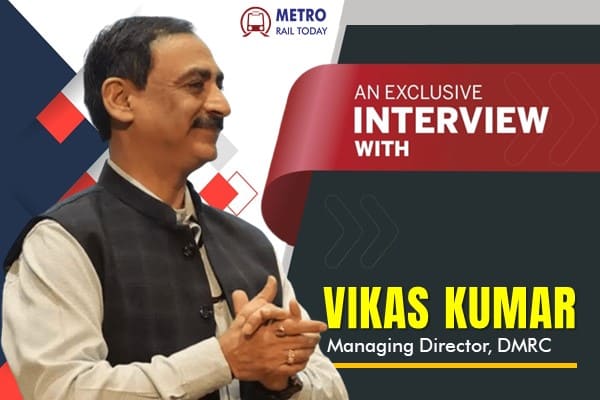
Dr. Vikas Kumar is currently serving as the Managing Director of the Delhi Metro Rail Corporation (DMRC), a role he assumed on April 1, 2022. With an illustrious career spanning over three decades in rail-based urban transportation projects, Dr. Kumar has been a stalwart within the DMRC since joining in September 2004. As an officer of the 1988 batch of the Indian Railway Traffic Service (IRTS), he held various positions within the Indian Railways before his pivotal roles at DMRC.
Having led the Operations wing of DMRC since 2007, Mr. Kumar's contributions have been instrumental in the successful initiation of metro services covering over 300 kilometers of metro corridors in the Delhi-NCR region. Notably, he has held key management positions such as General Manager (Operations), Executive Director (Operations), and Director (Operations) during his tenure.
Dr. Kumar's impact extends beyond Delhi, as he played a crucial role in establishing DMRC's wholly-owned subsidiary, 'Delhi Metro Last Mile Services Limited,' dedicated to providing last-mile services to and from metro stations. His expertise has also been sought internationally, with consultancy services provided to the Dhaka Metro project as an Operations and Maintenance Rules Expert. Additionally, he has been actively involved in consultancy roles for various metro projects in India, including Jaipur, Kochi, NOIDA – Greater NOIDA, and Mumbai.
A graduate in Electrical Engineering from the University of Roorkee (now IIT, Roorkee), Dr. Kumar furthered his academic pursuits with a master's in Opto-Electronics and Optical Communications from IIT, Delhi. His commitment to staying at the forefront of industry advancements is evident through his extensive global travels to understand the latest technologies and management strategies employed by rail- based urban transit systems. Dr. Kumar's role as DMRC's Senior Benchmarking Representative to the CoMET group showcases his dedication to benchmarking and adopting best practices in collaboration with leading metros worldwide.
While the Phase IV expansion of the Delhi Metro network is ambitious in terms of reaching out to the outskirts, what are connectivity challenges in reaching out to far-flung areas like Narela or Bawana, where housing projects are going unsold?
We are working on three priority corridors which have been sanctioned. Unfortunately, Rithala and Narela do not figure yet but we are pursuing plans with the government to connect them to the network. Transit-oriented development in such areas will take place only after the metro reaches there.
As DMRC has been known to finish its projects before time, what’s the timeline on the priority corridors?
The timelines had to be shifted because of COVID. We will be completing by 2026 and will be able to get some of the sections operational from the middle of 2025, particularly the first section between Janakpuri West and Krishna Park.
Now that the Delhi Metro has managed to achieve pre-COVID levels of ridership, how do you plan to accommodate a surge of passengers once the new sections open up?
We are already equipped with an adequate amount of rolling stock to factor in the numbers. That’s because we plan in advance. First, we can run trains at shorter intervals. For example, on Line 7 and 8, they can be run at one minute 50 second gaps while for other lines they can be around two minutes 30 seconds. Right now, most of the lines are running at a three-minute headway. So we have capacity. As a thumb rule, we have a capacity higher than the peak hour traffic demand. For example, Line 2, which is the busiest line right now, has a peak hour traffic demand of 39,000. Our capacity is almost 55,000.
How difficult has it been for you to reach pre-COVID ridership? What has been the biggest challenge?
COVID brought in many challenges. Social distancing meant people chose to stay away from mass rapid transit systems and were reluctant to take the metro. But then we slowly instilled confidence in them by ensuring strict hygiene and disinfection protocols inside our trains and at stations. We spread awareness among people and wherever the train reversed, we disinfected the seat, grab handles and all surfaces. When people saw that, they felt confident and resumed their journeys with us. It is all about giving passengers a better experience. Our reliability is more than 98 per cent, our signages are passenger-friendly, our modes of ticketing are convenient — A passenger can buy a token, use a QR code or a card, book through WhatsApp. Now, we are exploring other conveniences so that passengers can pick up their daily groceries and essentials too. We have roped in certain agencies who will install lockers at strategic stations to keep stuff that the passenger can order on our app. With the help of AI and data, we can send messages to the passenger about availability of commodities depending on their preferences. A passenger can buy the item and collect it from the locker while going back home. We are always looking to enhance the passenger’s experience.
Recently you signed an agreement with the Bhubaneswar Metro Rail Corporation. How difficult is it to create a metro network in old, population-dense cities which may not have the space or the geographical advantage?
When we talk of overcrowded cities, nothing could be a better example than Delhi’s Walled City which has Chawri Bazaar, Sadar Bazaar, Chandni Chowk and Delhi Gate. Most of Delhi is crowded and the metro here was not a greenfield project for us at all. In such a scenario, you have to retrofit metros, need to change the alignment and sometimes be prepared for surprises. Besides, you have to deal with many other public utilities. Since we have overcome such challenges in Delhi, we can overcome similar challenges anywhere. The metro should have been planned in our cities much earlier. But better late than never, so long as it is serving its purpose. For proper urban planning, a metro should come up in synergy with other urban infrastructure. That alone would create a well-planned city. As far as Bhubaneswar is concerned, it is a properly planned city. Since independence, only three cities had planned development — Chandigarh, Jamshedpur and Bhubaneswar. Having been planned by German architect Otto Konigsberger in 1946, the roads in Bhubaneswar are straight, at right angles and properly planned, with a lot of greenery and parks. A metro here will bring in transit-oriented development in a proper sense.
What is the critical threshold for a city to develop a mass rapid transit system like the metro? For instance, does Jaipur really need a metro or could it have done with a light transit system like a monorail?
I would say population. Any city with a million plus people requires a metro system. An ideal metro system would be one where you can walk down to a station no matter where you are located in the city. Only then will people prefer using it to private transport. That is why the metro has worked in London, New York, Moscow and Hong Kong. We are moving towards becoming that choice with Phase IV. As we develop parallel routes, we will be creating a mesh-like grid connecting every point in the city.
DMRC has propagated cashless transactions in a big way. How have they moved over the last five to six years?
We started with 15 per cent of our ticket sales being cashless. Now it is 40 per cent. The UPI has accelerated the process and we have also geared up our systems to accept multi-modal payments.
How can we make operations profitable?
If you provide a capacity, then it should be utilised. Otherwise, your operations will never make a profit. Moreover, there is a pressure to keep fares low and it should be done rightly so that normal people find it affordable to travel. But since running operations requires a lot of expenditure, that can be recovered through revenue only. In Delhi, 70 per cent of the revenue comes from ticket sales. The remaining comes from other sources of revenue like rental, consultancy and so on. You can reap these benefits only if the metro is utilised properly. The world over, very few metro systems make operational profit. If you talk about net profit, then no metro in the world is profitable. But when it comes to operational profits, then Delhi Metro is up there with Hong Kong and Taipei. The Hong Kong metro makes money from its real estate business than ticketing. Hong Kong has a smaller network but has a higher ridership compared to us.
Did Covid slow down your plans of using real estate, like letting out station space for shopping complexes and malls?
Many people shut down their retail businesses during COVID because they were not able to pay the interest. Although we did some hand-holding and gave a lot of concessions during that period, we could not retain them. Now real estate business is growing at a faster pace. But our revenue from it is just 20 per cent. Even if it goes up to 40 per cent, we don’t have scope for expansion as we have a very limited land availability. Then there are restrictions in terms of planning by civic bodies. For example, a land use change clearance is difficult to get. Even during construction, we faced challenges and had to change alignment to avoid coming close to protected heritage monuments or green cover as in the Ridge area. Then approval is required from both the State and Central Governments.
Is it possible to get a sense of the total capacity of Delhi Metro in terms of passenger counts? How much of it is currently utilised?
We have approximately six million journeys a day. In peak traffic rush, capacity utilisation is around 70 per cent. But it varies from line to line and as I said, we are 10 to 15 per cent extra capacity.
You talked about the importance of getting people closer to the metro station so that they use it more. Now I know that you can’t take a metro to every doorstep but what’s being done to address last mile connectivity? Who is responsible for that?
The last-mile connectivity is the responsibility of the state government. Of course, it has to be done in coordination with all other stakeholders and coordinated and complemented with other modes of transportation. When we started our journey with Phase I and Phase II, multimodal integration was possible in only the few stations where we could get land. So in Phase III, we insisted that the state government give us land at most of the stations for pick-and-drop shuttle services. We are short of mid-size buses now but the Delhi government is providing us many buses that we will start inducting December onwards. Right now, shuttle services have been taken over by e-rickshaws, which are not organised.
Metro used to run its own fleet of minibuses to plug in this gap of last mile connectivity. Why didn’t it work out?
The buses were not ours, we had got in operators. They chose routes that were remunerative and tried to cut corners. Then there were a lot of issues with the Transport Department about getting permits and route changes. Now, the department runs these buses.
Has the Delhi Metro ever asked the government to provide subsidies upfront and take them on its books instead of putting it on the Delhi Metro account?
That way it becomes clearer for the government too. At the end of the day, a government has political power and yours is a corporation. We were making operational profits before Covid. We have just broken even now. In between, it is the responsibility of the government to bear the losses. We have written to them and they are in advanced stages of processing that.
Is there a timeframe for net profit?
Net profits are almost next to impossible. That’s because we have to repay the JICA (Japan International Cooperation Agency) loan. We need support. We have written to the Delhi government on this.
Will the launch of the Rapid Rail corridor impact the utility of Delhi Metro.
The Mumbai Metro, as we know, has competition from local trains over ridership. No, the Mumbai Metro is being used a lot. In fact, it has a wonderful ridership for such a small section. Mumbai needs a sub-urban network equally because there is a shortage of capacity. A similar scenario will play out in Delhi. Even with Delhi Metro operations expanding, the city registers high levels of pollution because of substantial use of private transport. Yet there is a lot of scope for people to move to public transport. So, you need to augment capacities of mass rapid transport systems in Delhi. The Rapid Rail can only complement Delhi Metro, it won’t take away its traffic. The planning of all systems is being done in an integrated manner now. Even bus routes are being planned to complement each other rather than have surplus capacity in some areas and no capacity in others.
Over the last two years, the Delhi Metro, which has a presence in social media, has become one of the most popular places to shoot Instagram reels. Have you ever thought of having a dedicated area in each station for content creators?
Not thought about that but definitely a few selfie points are there. As far as the message is a positive one, there is no problem with reels. But if they give a wrong message to society, then it becomes a bother for us. A person cannot be present everywhere. But we do surveillance and try to stop mischief-makers. We have CCTV coverage everywhere. Sometimes we ignore objectionable videos because intervention will give undue publicity to perpetrators, whose purpose of drawing attention would be served.
When Delhi Metro had started, there was always a problem of how the passenger would get on and off the main road, caught as they would be in the middle of a traffic outside a station. At least in Delhi, we see the transition happening to ensure a seamless corridor. Is this conversation happening with urban designers in other cities?
This is certainly being planned for the newer metros. Metro architecture is a continuous learning process. While we learnt about the need for a seamless link from Delhi, we learnt what to do with time overruns from Kolkata. Similarly, a newer metro will get the better advantage in terms of user experience. If you go to Kochi, you will see a proper integration of multi-modal connectivity. They have even started a water metro.
You’ve been with the Delhi Metro since its inception in different capacities. Do you think that at times the Delhi government, the Centre, Delhi Development Authority (DDA) and such agencies are not really in synergy with each other? Have you found it difficult to coordinate between them?
Definitely there are challenges whenever a lot of agencies are involved. But if you put up a positive proposal and try to explain it across the board to everybody, I think nobody will be foolish enough not to accept something that works for the public good. So, you have to convince them in that manner.
Have these challenges become more difficult in the past eight or nine years considering the growing distance between the Centre and the state?
No, that does not matter as far as the city of Delhi is concerned.
Under the revenue stream, there is something called external projects. What are these and over the years have you seen non-core streams contribute to revenue significantly?
External projects are those where we are consultants for other metro systems, like those in Mumbai, Patna and now Bhubaneswar. In fact, we are trying to expand our consultancy footprint abroad, now that we have almost three decades of experience in running a world class metro system. The consultancy share in total revenue is still very meagre, around Rs 40-50 crore annually. Ticketing continues to be our biggest source of revenue.
(Based on his recent conversation with Mallica Joshi and Upasika Singhal of the New Indian Express)




